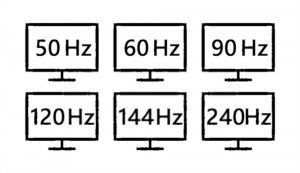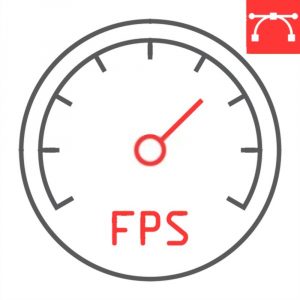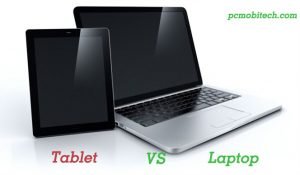Smartphones today are high-end and extremely smart. They come with extremely speedy and fast 90 Hz to 120 Hz refresh rate on the displays.
It is another way in which smartphones today are distinguished from one another among all the other competitive features. It is an addition to the features that help you choose which smartphone to buy. It depends on an individual if this latest display tech trend can be a deciding factor for them to pick from.
The advantages of refresh rates are better understood when the high refresh rate application is visible while using the phone. The content on the phone, as well as games, can work and look a lot smoother. 
Although, if it is worth the extra battery consumption due to the high refresh rate, it depends on the user’s convenience. As it was introduced elaborately in LCDs, this concept of refresh rate has to do with how the human brain understands and interprets motion.
Every individual witnesses the resolution of the motion differently.
Quick Links
What is the Refresh Rate?
Displays of various electronic devices are not static. It appears very smooth on your devices.
The content and motion are fluid and clear because all the latest content from the handset’s processor is updated by every pixel. The rate at which this update takes place is not random. The panels on the device update this content at defined and regular intervals. These intervals are known as the refresh rate.

This refresh rate is the measure of how quickly the display updates take place on the phone. How often and quickly this content is updated once the screen refreshes imply refresh rate.
It is measured in Hertz (Hz). It counts the number of times the display refreshes content per second. 60 Hz means the screen refreshes 60 times in a second; 144 Hz is a refresh rate of 144 Hz times in a second, whereas 240 Hz updates 240 times in a second.
The faster the updates, the lower is the latency. It is because the pixels are refreshed faster and more often, in this case. The refresh rate isn’t the only factor in round-trip display latency, but it’s the largest contributor.
The smartphone screen on an individual does not refresh everything at once, in a single cycle.
Each horizontal row of pixels is refreshed until the entire display is updated at the required rate. If you see a display in slow motion, this action can be visible. The reason why displays flicker when through the phone’s camera is this. An entire cycle is required to complete refreshing and updating.
Is refresh rate and FPS the same?
A common misconception is in the understanding of frames per second (FPS) and Refresh Rate.
The frame rate comes to use while comparing the performance of two high-end gaming computers. At the same graphic performance, a computer is better if it can produce a higher frame rate than others.

Frame Rate determines the rate at which images are displayed in one second. To produce or render a new frame, your CPU and GPU work together to determine the AI’s actions, the physics, positions, and textures of the objects in the scene to produce an image.
Then your GPU cuts this image into pixels at the resolution you set and sends this information to the display. The more powerful your CPU and GPU, the more frames they can generate per second.
The monitor is where the refresh rate comes into the picture. Measured in hertz, it determines the number of times your monitor screen can redraw in a given second.
Frame Rate Vs Refresh Rate
Frame Rate and Refresh Rate are two different concepts.
While FPS is the number of frames the computer is producing in a second, Refresh Rate determines how fast these images are refreshed in a second. The Refresh rate does not affect the Frame rate per second count of the GPU.
Although, if the FPS of the computer or any device is higher than the refresh rate, all the frames produced shall not be displayed. So, even if the refresh rate does not inhibit the frame rate, it sets a cap on the display rate.
Frame rates or FPS is used as a benchmark in the world of gaming computers.
It helps measure the performance of the games, drivers, and the hardware of the device. In the process of actually playing a game, the refresh rate becomes important. It can limit the device’s frame rate, and in this case, all the frames shall not be displayed.
If the FPS and refresh rate of the device are different, the result might be screen tearing. It is a glitch where the info from two or more frames is shown on a crammed single screen.
Although it does not damage the display, the visual quality of the graphics might be severely poor.
Does a higher refresh rate make a difference?
The higher the device’s refresh rate, the smoother is the movement of the content on the screen.
It becomes irrelevant in tasks like swiping through one’s email or scrolling through Instagram, as they do not benefit from a higher refresh rate above 60Hz, which is the standard rate.

Although the industry standard for a host of video content is 24Hz, content with a higher refresh rate can make the transition of abundant graphics smoother and appease the device’s viewer or user.
The advantage of a higher refresh rate comes into good use while gaming. Higher FPS and refresh rate can be visible as a noticeable effect. The visual latency is reduced, and with this, the transition of the graphics appears smoother.
Gamers go for 120Hz or 144Hz displays for their high-end gaming computers. With higher refresh rates in smartphones too, mobile gamers have also benefited a lot from the update.
Although, there might be a few drawbacks to the process of having a higher refresh rate. It requires a processor with the need for extremely high energy requirements. The trade-off for having a high refresh rate leads to compromised battery life. The 90Hz processor led to 200 minutes less battery life than the 60Hz processor.
Which Refresh Rate to choose?
Choosing which refresh rate is better for your device, 60Hz, 144Hz, or 240Hz, requires a little bit of technological awareness.

Refresh rate only serves the purpose of a smoother motion in televisions and regular monitors. In gaming, better motion quality gives a higher degree of control over the game by helping you make the right decision in the toughest of situations, giving the player an edge over the others.
The display technology used for the higher refresh rate monitors is not necessarily an ideal option for overall display quality and color accuracy.
If looks are your priority, the best choice for you is 60Hz. For gamers, especially, performance is the catch. In that case, the frame rate and refresh rate can enhance performance by making their judgments and responses faster.
It can give them an edge over other gamers as the graphics are all about quick and accurate responses, which can be enhanced with smooth screen movement.
60 Hertz
60Hz is the lowest refresh rate that is present on the monitors and TVs in general.
A considerably good performance in terms of motion and graphics can be expected from a 60Hz refresh rate.
It not only performs nicely while viewing the videos and movies, as well as other activities like scrolling posts on social media sites, the 60Hz refresh rate is also the most economical option out of all others.
Individuals whose device use is restricted to official purposes, entertainment, and low-end gaming can opt for a 60Hz refresh rate. These devices do not need a lot of graphical advancement.
Putting it in better words, the quality of an individual’s performance or entertainment is not affected. Thus, a 60Hz refresh rate is a safe and intelligent buy without burning a hole in one’s pocket. It is an economical buy among all the other options.
144 Hertz
The most common refresh rate count in gaming monitors is 144 Hz.
Its effect can be seen in the graphics’ fluid motion in the game and the smooth movement on the screen that aids the gamers by enhancing the speed of their responses.
The most notable difference is when a 144Hz user degrades to a 60Hz display – many ongoing 144Hz display users mention that they can see everything from video games to the cursor speed on their desktop feel sluggish when going back to 60Hz.
A 144 Hz refresh rate is higher in price than the 60Hz processor but provides a visual guarantee to the gaming world.
240 Hertz
240Hz is the highest category of Refresh Rate found in modern devices and monitors.
This comes with an extremely updated and fine-tuned processor that offers smooth motion on the screen. The 240Hz almost eliminates the blurring of the motion on the screen.
Although 240Hz is less popular, it has been prompted that this can barely be recognized and comprehended by naked eyes. Apart from that, 240Hz is also extremely costly. It isn’t usually affordable to a lot of common people and gamers as well.
You May Also Like:
- All You Need To Know About HD Ready (720p), HD (1080p), 2k, and 4K Resolutions!
- HDD vs SSD vs NVMe M.2: Which One is The Best?
- What is WiFi 6 and 6E? Difference between WiFi 6 and 6E
- What Does WiFi Stand For? (What is WiFi?)
- Control & Protect Android Smartphone WiFi Internet from Friends.
Which upgrade gives the best value for money?

60Hz to 144Hz
In the modern and technologically advanced times, updating to monitors that run on refresh rates higher than 120Hz is not complicated.
Frame Rates higher than 120Hz provide quality screen motion and graphics and are easy. There are video games that receive almost 300 frames per second on good, high-end computers.
If your device allows operation beyond 120Hz, it is economical and wise to upgrade to 144Hz. Although a higher refresh rate only improves the performance of the game and not the actual visual display.
There are games like League of Legends or Call of Duty that are packed with graphics and action. The players’ performance is affected immensely with every micro-movement and the speed of the movement of every frame on the screen.
If you wish to go for the upgrade, it should be kept in mind that you might lose out on the color accuracy. The 144Hz monitors are not as vividly colorful as 60Hz monitors. Secondly, your computer settings should allow your PC to run at 144Hz.
An upgraded, premium quality graphics card is also required to support a 144Hz refresh rate. Thus, additional investment has to be made in the up-gradation of the graphics card and processor to enjoy the full benefit of faster refresh rates.
144 hertz Vs. 240 Hertz
The monitors that support a 240Hz refresh rate are very few. If your PC has the configuration to handle 240 frames per second in a game, you can go for the upgrade comfortably.
Before investing in the upgrade from 144Hz to 240Hz, the checklist below can help make a wise choice.
- You are a regular or professional gamer who competes frequently.
- Your performance is affected by the pace of the motion on the screen.
- Your computer can reliably run the games you play competitively at 240 frames or more.
- You don’t mind paying out a lot for a monitor and are aware that the price for the 240Hz monitors may drop as the technology becomes more popular.
All in all, with it, it is the visual pleasing that is your end-goal to using any device; a lower refresh rate can do the deed for you.
On the other hand, with technological advancement, higher refresh rates are increasingly preferred by professional gamers and visual graphic enthusiasts. If the picture-quality performance is something you cannot compromise, an investment in upgrading to a higher refresh rate can be sound and intelligent.
Before updating, it is suggested to look for all the available prices and options and check your system to see if the processor supports the upgraded refresh rate.
With the dynamism in technology, any investment in something like refresh rates is to be considered keeping in mind multiple aspects, like performance and the cost.
Still, having any doubts about the refresh rate? Feel free to ask us in the comment sections.
When you purchase through links on our site, we may earn an affiliate commission. Read our Affiliate Policy.





